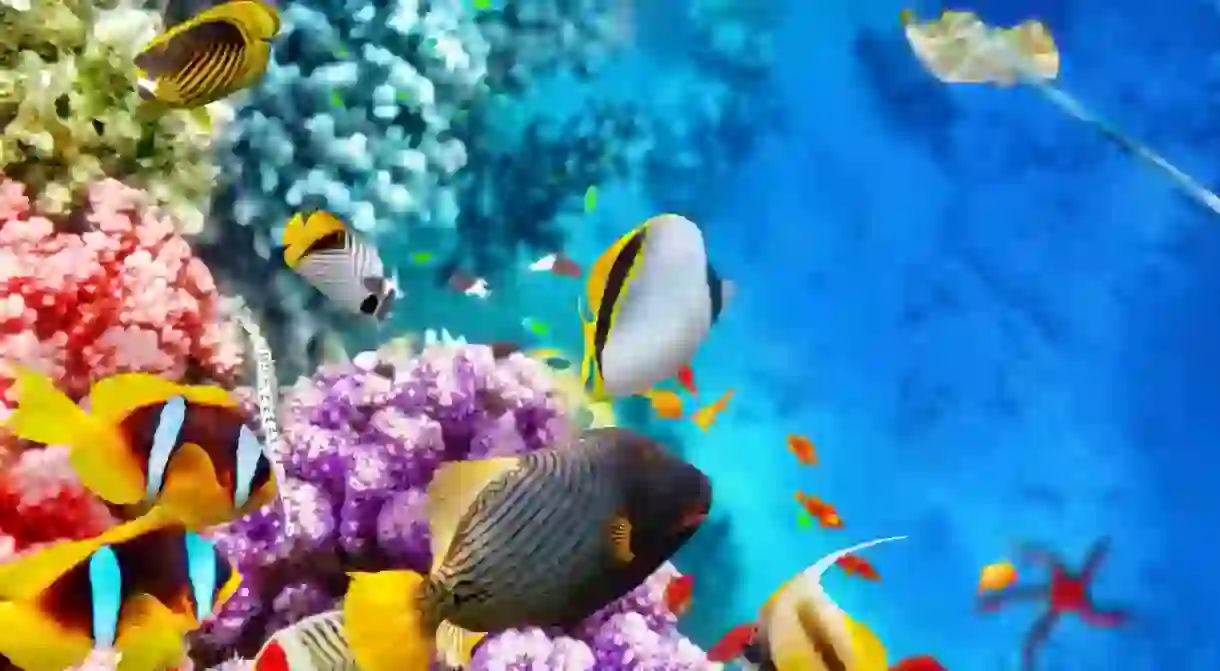The 10 Best Ecotourism Experiences in Australia

Ecotourism — a type of travel that exposes visitors to the great outdoors without damaging the natural environment — is one of Australia’s strongest tourist drawcards, with almost eight million square kilometres of wilderness to explore. Start your adventure with these 10 outstanding environmental experiences.
Great Barrier Reef
Natural Feature

Hurry up and see the Great Barrier Reef in all its glory while you still can. Climate change is bleaching the colour out of this brilliant stretch of coral reef, which spans more than 2000 kilometres of sun-kissed Queensland coast. Cairns is your best launch pad to explore the UNESCO World Heritage-listed landmark with an eco-certified tour operator like Reef Magic Cruises.
Uluru-Kata Tjuta National Park
Natural Feature
This mammoth sandstone monolith is the symbolic heart of the Australian continent, as well as the defining feature of a national park that carries immense cultural significance to the local Indigenous population — Uluru is a sacred site to Central Australia’s Anangu people. The Northern Territory has plenty more great outdoors to explore, in particular the Kakadu National Park and Arnhem Land further north near Darwin.
Swimming with sharks
Natural Feature

Fraser Island
Natural Feature

The world’s largest sand island is brimming with stacks of different eco-tourism experiences. There’s the ancient rainforest containing giant ferns and towering pine trees. There’s the 200-strong population of dingos, a rare native strain that’s protected from imported mutts on the mainland. There’s the series of serene freshwater lakes, formed in the dips between sand dunes. And there’s the world-class whale watching on offer in Hervey Bay, the end of the ‘Humpback Highway’ up Australia’s east coast each winter.
Penguin Parade
Natural Feature

Summerland Beach on Phillip Island hosts one of the most adorable ecotourism experiences you’ll find anywhere on earth. Every evening at dusk, a large colony of little penguins return to shore after a long day’s fishing at sea, wadding across the sand to huge crowds of doting admirers sitting in the viewing platforms at the Penguin Parade, which is purpose-built to not interfere with the tiny birds’ natural habitat.
Tasmanian Wilderness
Natural Feature

The Tasmanian Wilderness World Heritage Area covers 20% of the Apple Isle, preserving one of the last expanses of temperate rainforest anywhere on Earth. Made up of more than 20 different areas, the Tasmanian Wilderness region features a number of rare plants and animals, as well as Indigenous artefacts in limestone caves that date all the way back to the last Ice Age more than 10,000 years ago.
Kangaroo Island
Natural Feature

Of course, an island named after Australia’s national animal is absolutely crawling with them. Kangaroo Island is covered in pristine national park that’s home to a healthy population of roos that hop around alongside koalas, echidnas, six unique species of frog, a healthy population of sea lions lazing around on the beach at Seal Bay, plus loads of other native animals.
Ningaloo Reef
Natural Feature

Between March and August every year, the largest species of fish in all the world’s oceans converges on a remote corner of Western Australia… and you can swim right alongside them. Take the trek 1200 kilometres north of Perth to Ningaloo Reef, where whale sharks come to feed — come face-to-fin with these 14-metre-long gentle giants on a tour with an eco-certified operator like Ningaloo Discovery.
Daintree Rainforest
Natural Feature

Australia’s largest tropical rainforest — all 1200 square kilometres of it in Tropical North Queensland — is home to some plants that are an astonishing 100 million years old. Yet another one of Queensland’s UNESCO World Heritage listed sites, the Daintree Rainforest sits right on Cairns’ doorstep next to the Great Barrier Reef, providing a home to a rich diversity of rare birdlife, an array of ancient flora, as well as plenty of freshwater crocodiles, so swim with caution!
Taronga Zoo
Zoo
Wildlife is one of the things that attracts so many tourists Down Under, and there is no shortage of excellent nature reserves where you can get up close and personal with Aussie animals. The country’s most famous zoo is found on Sydney’s Lower North Shore, with Sydney Harbour supplying the sparkling backdrop. Taronga Zoo houses 4000 animals from 350 native and exotic species, and the not-for-profit organisation keeps sustainability and conservation at the core of its mission.













